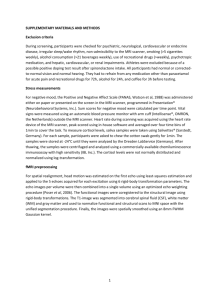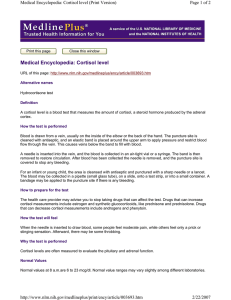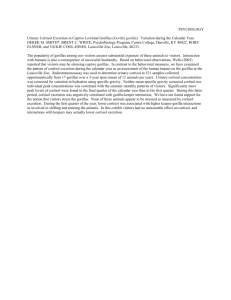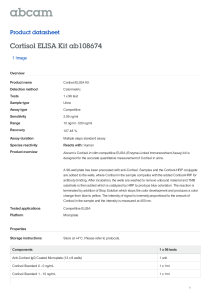PowerPoint Presentation - University of Pennsylvania
advertisement
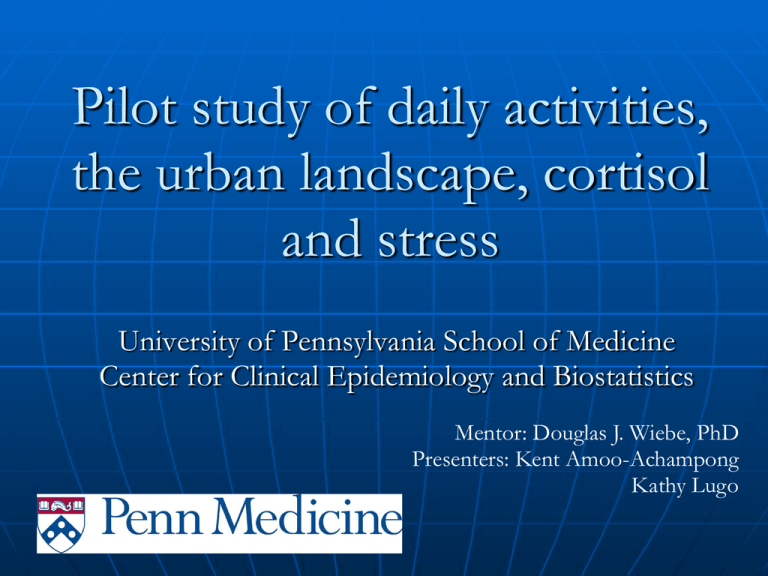
Pilot study of daily activities, the urban landscape, cortisol and stress University of Pennsylvania School of Medicine Center for Clinical Epidemiology and Biostatistics Mentor: Douglas J. Wiebe, PhD Presenters: Kent Amoo-Achampong Kathy Lugo Outline • • • • • • • • Background Objectives Process Technology Study Protocol Data Management Results Conclusions Background • Socioeconomic status & health • Levels of exposure to environmental stress • Diurnal pattern of cortisol Background • Socioeconomic status & health • Levels of exposure to environmental stress • Diurnal pattern of cortisol Objectives • Devise and implement a protocol that would enable us to prospectively monitor where young urban adults spend time over the course of their daily activities • Assess the accuracy and reliability of study devices • Evaluate the willingness of subjects to complete the study • Determine the feasibility for conducting a similar study at a larger level in the future Process • How do we learn about where people go, what they experience, and whether it is stressful? • • • • • GPS- for prospective follow-up GIS- for retrospective follow-up Stress via cortisol Stress via heart rate Subjects underlying characteristics Methods of data collection • Technology • • • Global Positioning System Saliva samples Heart rate monitor • Self report interview Technology Practice Runs • Test GPS accuracy by comparing GPS data & self report data from the Bar Crawl test run Self report interview • Developing the questionnaire o Personal Control and Mastery o Social Network Diversity o Emotional Support o Chronic Burden o Physical Activity o Alcohol/Tobacco use o Sleep quality o Symptoms of depression Study Protocol • Recruitment o Convenience sample o STARS study sample • 4 day period o Baseline Interview Study procedures/ administer questionnaire o 2 day data collection period o Exit interview self-reported path using STARS mapping software Equipment Data Management • GPS data and corresponding heart rate are matched by their time-date stamps and imported into ArcGIS software. • Data is over-layed on a satellite image of Philadelphia, along with the self-reported daily paths, with corresponding stress indicator • The paths with corresponding heart rate are animated in ArcGIS to assess concordance between the two methods Clip of animation Results • Sample characteristics o Age: 20 o Gender: 3 males, 4 females o Race: 3 African Americans, 4 Caucasians • Performance of technology • Cohesive layering of data • Subject compliance with study protocol Presenting our work • Submission of abstract to the American Public Health Association • Submit manuscript for publication Conclusions • Enrollment continues, but thus far the protocol we developed appears to be feasible, and could be applied to a larger study for analysis on how urban environments can impact stress and, consequently, health in young adults • Douglas Wiebe, PhD • Joanne Levy • The SUMR program sponsors: • Wharton Health Care Management Department • Leonard Davis Institute of Health Economics • Center for Health Equity Research and Promotion (CHERP)


